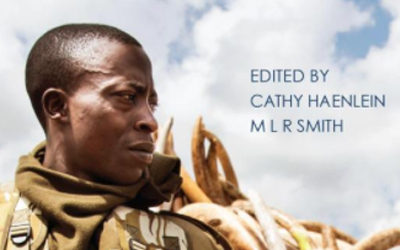Wildlife Trafficking and Security: Myths and Realities
By: Cathy Haenlein, Research Fellow, Royal United Services Institute
In January, the Royal United Services Institute (RUSI) and King’s College London’s Marjan Centre launched the Whitehall Paper Poaching, Wildlife Trafficking and Security in Africa: Myths and Realities. The book’s aim is to assess the impacts of poaching and wildlife trafficking not only on endangered species, but also on the security of human communities. During preliminary investigations, the authors noted a lack of scholarly research in this area and the resultant rise of a series of unproven yet popular narratives. It is these narratives that the paper seeks to dissect, exposing the real evidence that underpins them.
In doing so, the book analyses the ‘myths and realities’ pertaining to four core narratives. These include poaching and wildlife trafficking acting as threats to human security, as drivers of conflict, as funders of terrorism, and as a focus for organised crime. Though focusing on source and transit countries in Africa, parts of the analysis are also relevant to states affected by Illegal Wildlife Trade (IWT) further downstream. Of greatest note here is the book’s focus on ‘myths and realities’ around organised crime – a key factor throughout the supply chain.
A dedicated chapter, by Tim Wittig of the University of Groningen, explores the validity of the narrative of ‘kingpin’-led crime groups supposedly dominating IWT. Instead of a centralising mafia or transnational criminal organisation exercising control throughout the supply chain, Wittig provides evidence of a more horizontally integrated criminal ecosystem comprising multiple localised and functionally specialised elements collaborating as opportunity dictates – a finding with important implications for law enforcement strategies. He also highlights overlaps with other crime types – pertaining especially to international drugs trafficking and contraband smuggling. This is in contrast to a more widespread perception of wildlife trafficking as an isolated crime type.
This and the book’s other chapters aim to provide the most detailed analysis yet of the range of security threats posed by poaching and wildlife trafficking in Africa. In doing so, the book looks to provide a foundation for those looking to address the threat posed to both biodiversity and human communities. An extension of this analysis further along the supply chain could provide similar insight to practitioners and policy makers.
Of particular note to the Oxford Martin Programme on the Illegal Wildlife Trade, it is also possible that empirically based findings of this nature could present another useful tool in efforts to influence consumer demand for illegal wildlife products.
Article edited by: Nafeesa Esmail




